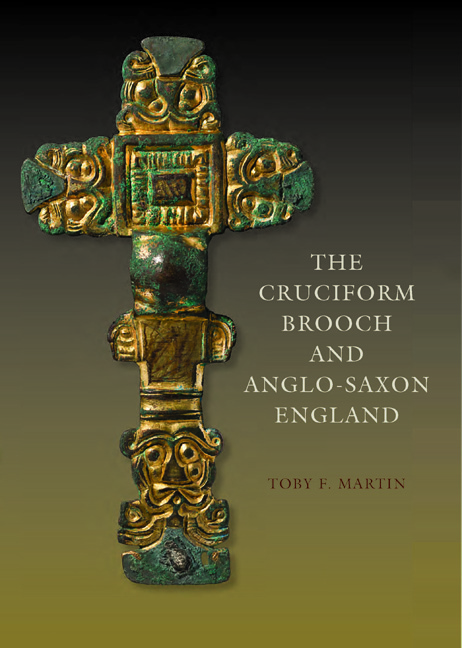Book contents
- Frontmatter
- Dedication
- Contents
- List of Illustrations
- Preface
- Acknowledgements
- 1 The Anglian Brooch par excellence
- 2 A New Typology for Cruciform Brooches
- 3 Building a Chronological Framework
- 4 Cycles of Exchange and Production
- 5 Migrants, Angles and Petty Kings
- 6 Bearers of Tradition
- 7 Cruciform Brooches, Anglo-Saxon England and Beyond
- Appendix 1 Cruciform Brooches by Type
- Appendix 2 Cruciform Brooches by Location
- Appendix 3 A Guide to Fragment Classification
- Bibliography
- Index
- Plate Section
4 - Cycles of Exchange and Production
Published online by Cambridge University Press: 05 May 2015
- Frontmatter
- Dedication
- Contents
- List of Illustrations
- Preface
- Acknowledgements
- 1 The Anglian Brooch par excellence
- 2 A New Typology for Cruciform Brooches
- 3 Building a Chronological Framework
- 4 Cycles of Exchange and Production
- 5 Migrants, Angles and Petty Kings
- 6 Bearers of Tradition
- 7 Cruciform Brooches, Anglo-Saxon England and Beyond
- Appendix 1 Cruciform Brooches by Type
- Appendix 2 Cruciform Brooches by Location
- Appendix 3 A Guide to Fragment Classification
- Bibliography
- Index
- Plate Section
Summary
An holistic understanding of cruciform brooch production must go beyond a technical explanation of casting processes and raw materials. From an interpretative perspective, production involves a number of physical, mental and social processes. Craft production is also, inevitably, part of wider exchange relationships. Here, I will accentuate the cyclical nature of both production and exchange in order to emphasise their reiterative, perpetual and socially reproductive functions. The idea of repetitive action is also necessary to understand how cruciform brooches operated as material symbols, how they came to stand for something other than themselves and how they consequently became valuable items. Just as exchange describes relationships between people facilitated by objects, the production of a type series describes relationships between objects drawn by people. Hence new and stylistically advanced members of an object class must to some extent replicate older, pre-existing forms to remain intelligible and authentic. The dynamic nature of these relationships, both between people and between objects, illustrates how the meaning of cruciform brooches was not a fixed, inherent value, but an adaptable network of relationships drawn between members of the social and material worlds. My investigation of the social meanings of cruciform brooches begins here with an exploration of these cyclical, reiterative processes, primarily because they get at the underlying foundation of what a cruciform brooch actually was in early Anglo-Saxon society, while Chapters 5 and 6 will explore what cruciform brooches did in both practical and social terms. Perhaps counter-intuitively, I am going to start by discussing exchange before moving on to production, as it sets the social context for the rest of the discussion. The principal question I set out to answer in this chapter is concerned with how cruciform brooches, inflated to the extent that they were no longer especially practical, became valuable and meaningful objects both in terms of individual items and as a type series taken as a whole.
- Type
- Chapter
- Information
- The Cruciform Brooch and Anglo-Saxon England , pp. 129 - 160Publisher: Boydell & BrewerPrint publication year: 2015



